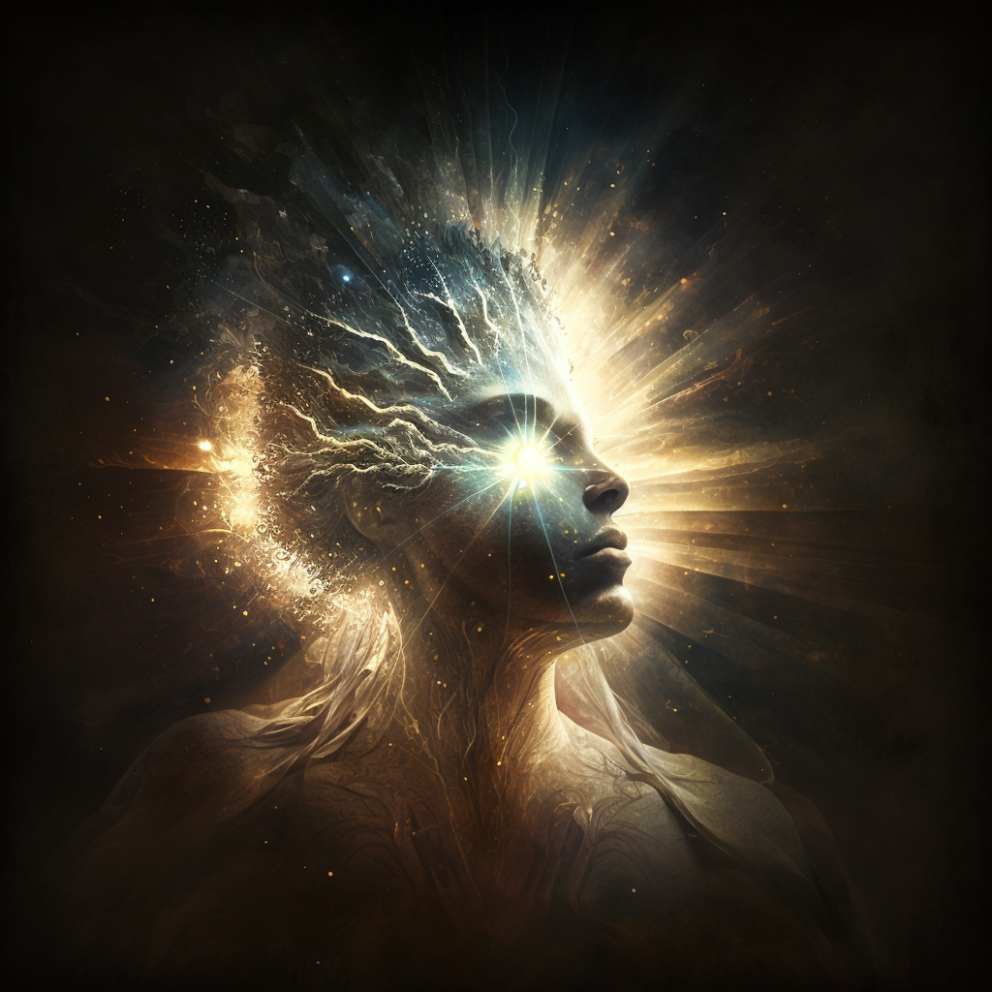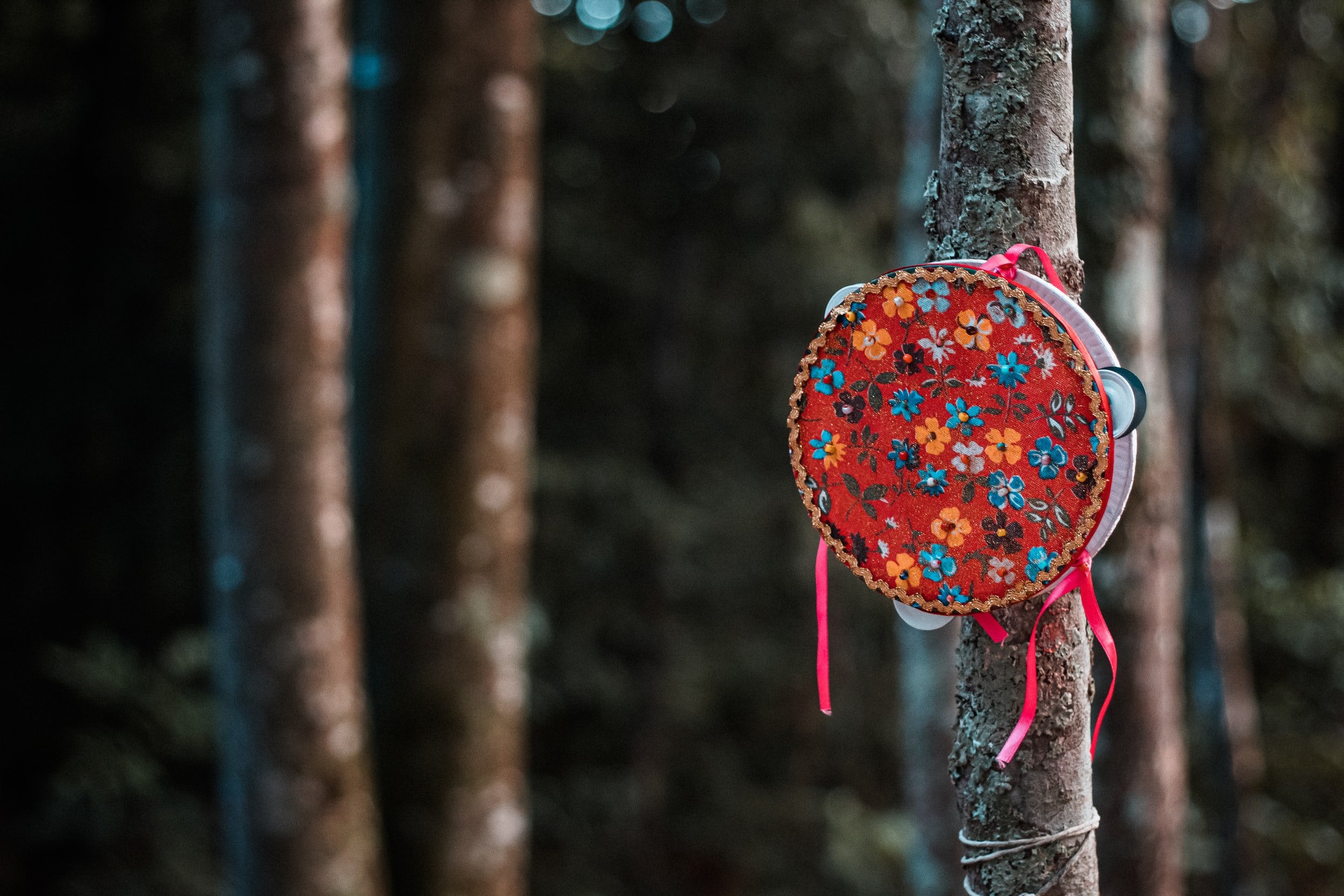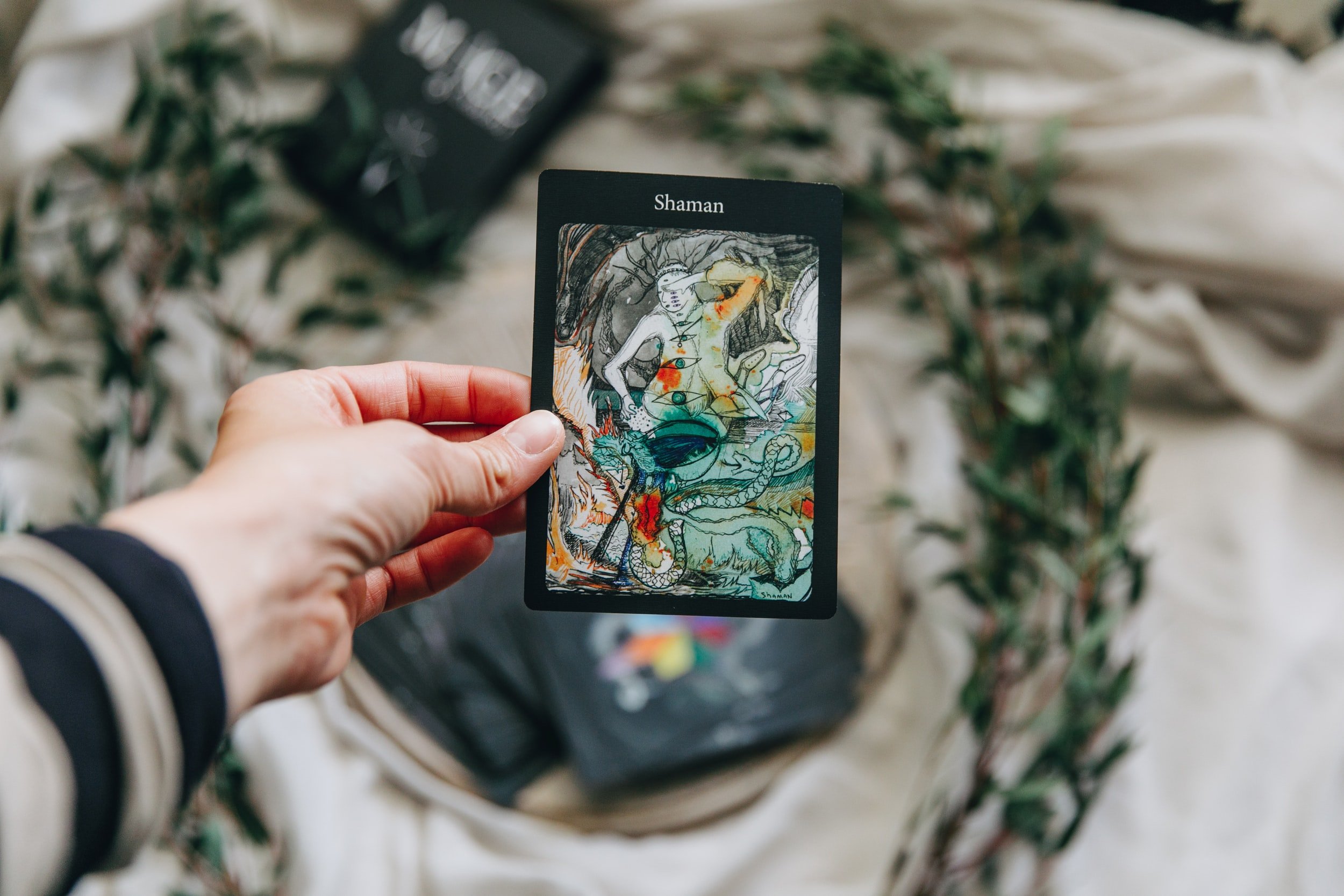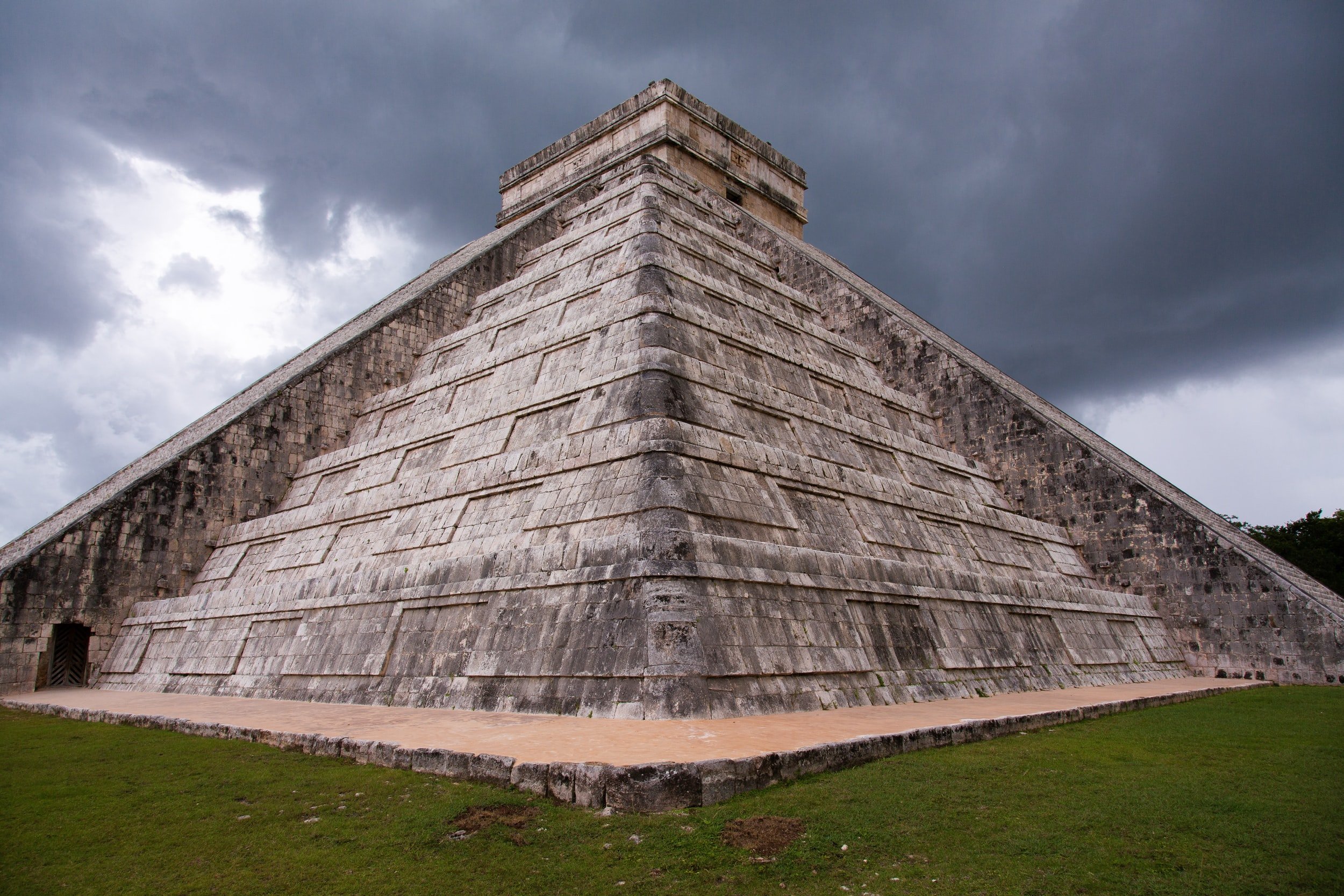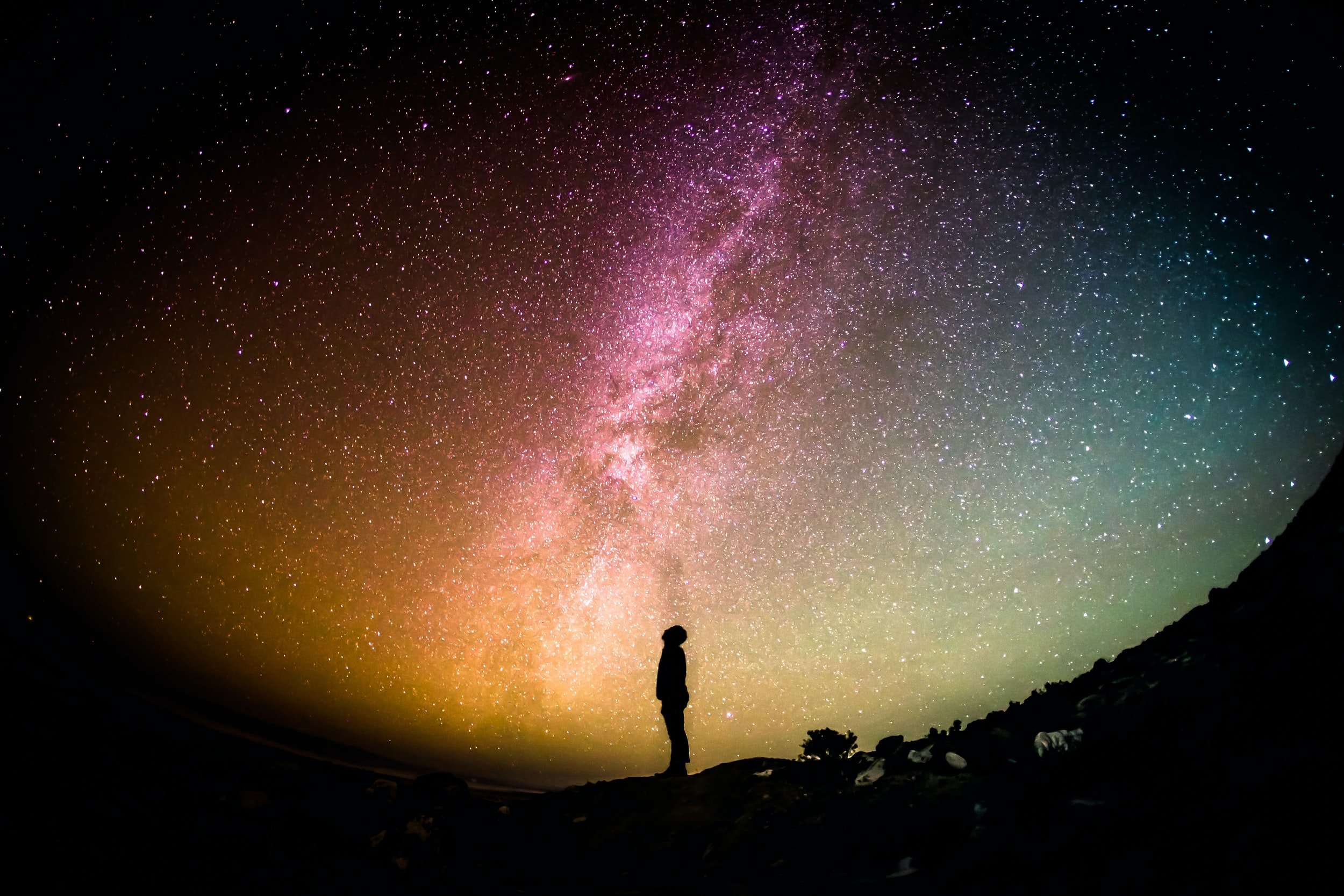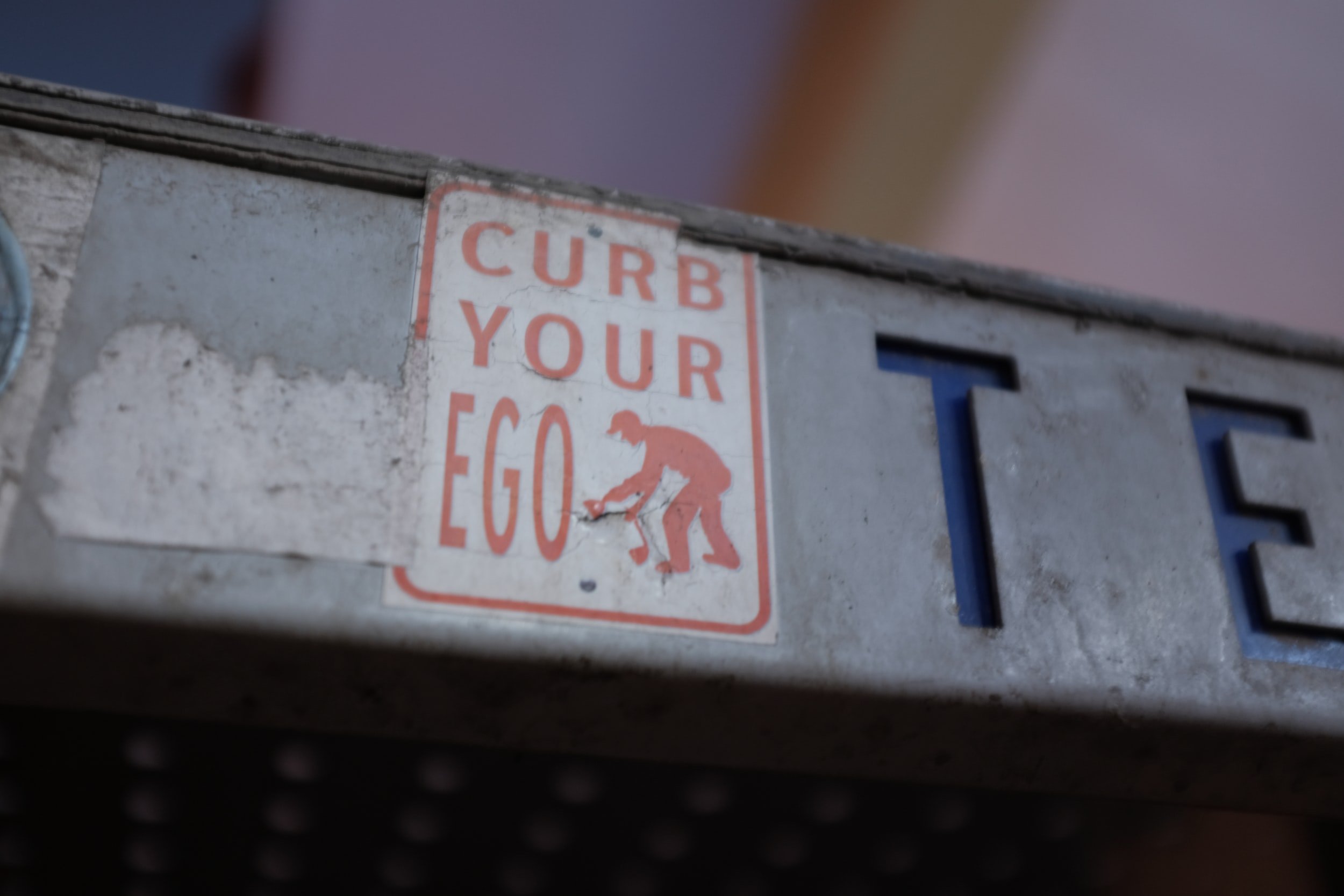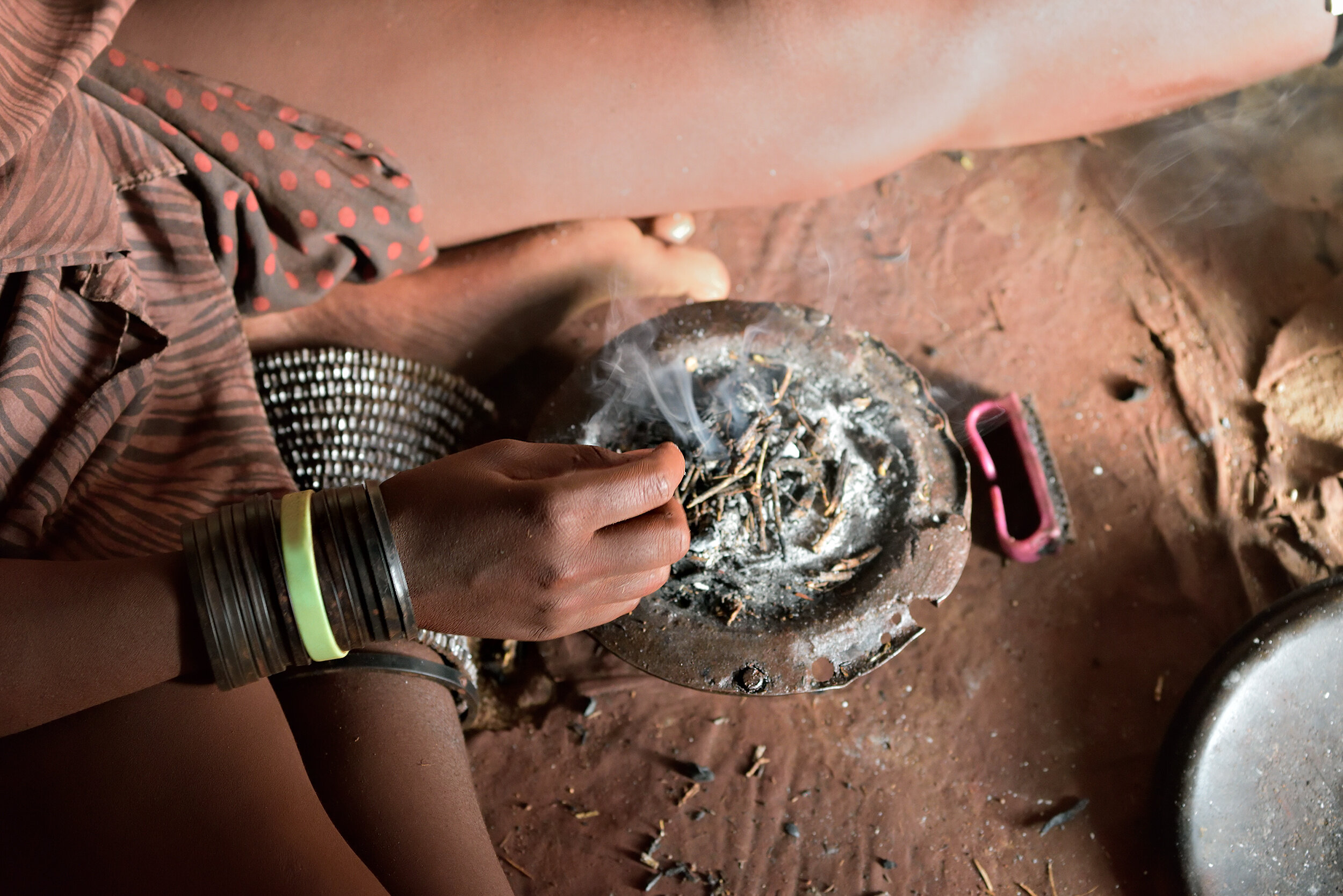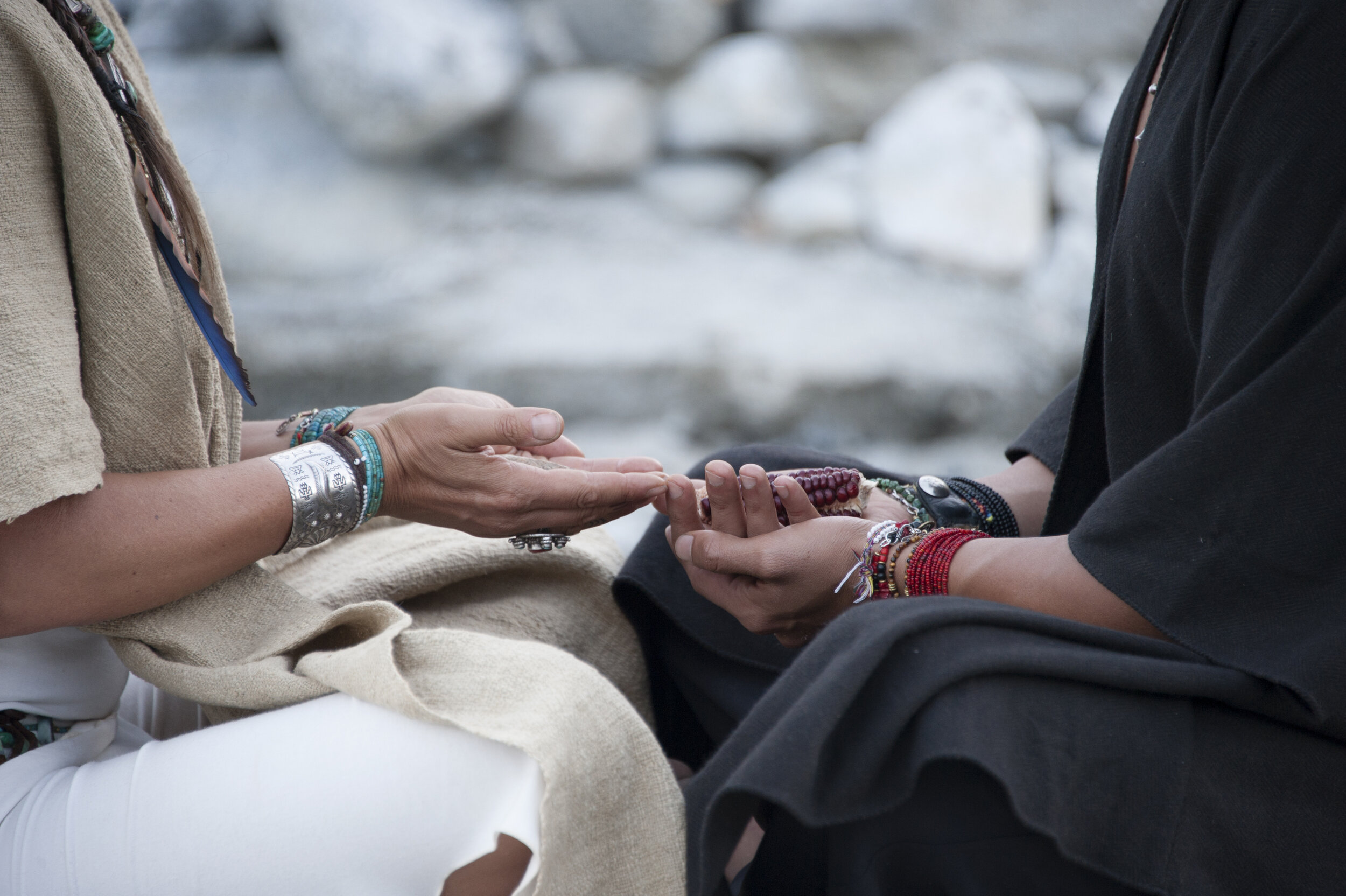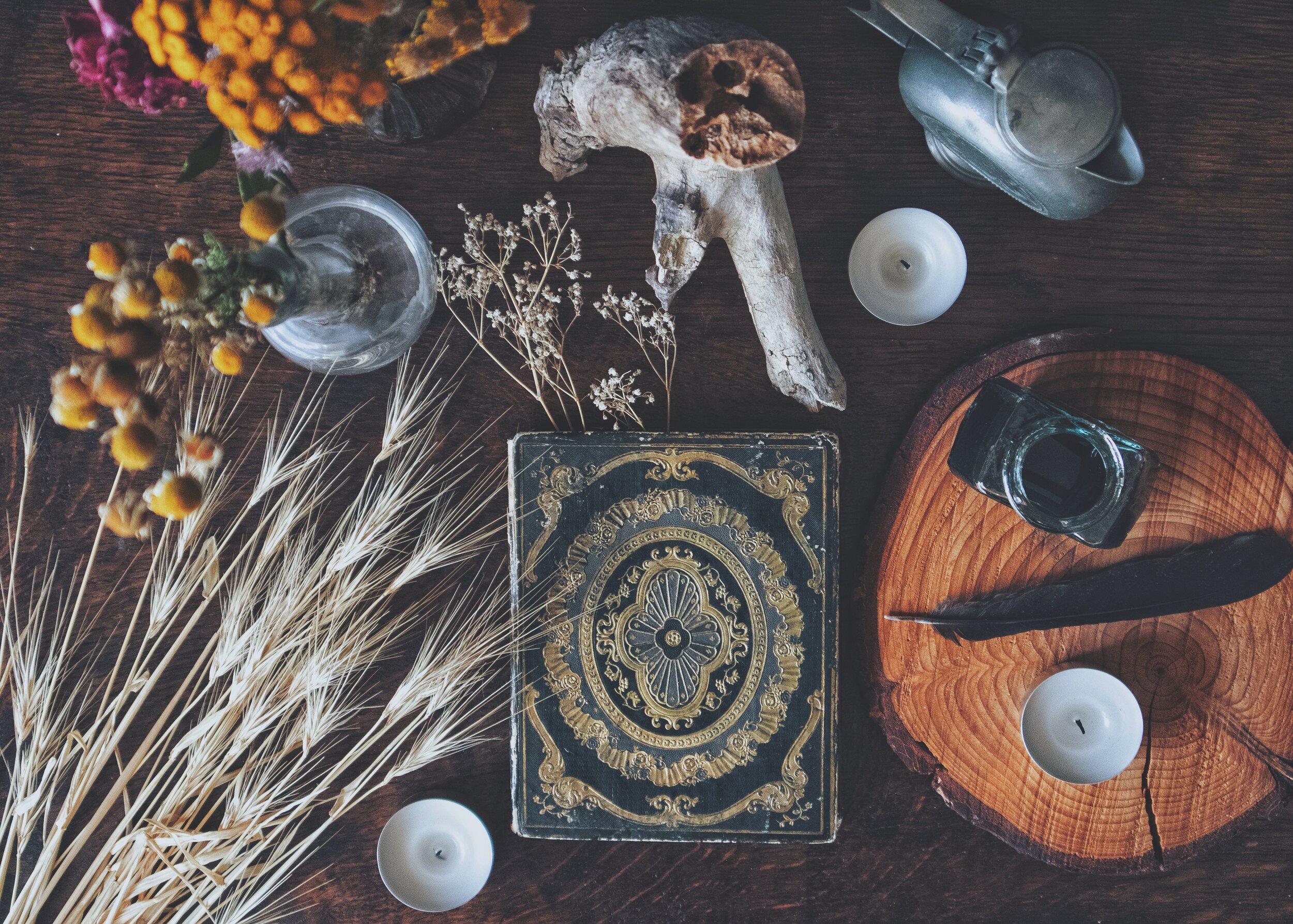The signs and symptoms of sp[ritual awakening overlap with those of certain mental health diagnoses. How does one distinguish between spiritual awakening and mental health?
Navigating the Complex Relationship between Sex and Shamanism
Welcome to the fascinating realm of shamanism and sexuality! This article will explore the complex relationship between sex and shamanism. For thousands of years, shamans have explored the spiritual, emotional, and physical realms of human experience. As they have done this, they understand the power of sexuality and its profound impact on the shamanic experience. We will explore how shamanism can help us to embrace our sexuality, use it in a sacred way, and ultimately become empowered and open to the divine mysteries of life. So, let us begin our journey together and learn how to navigate the complex relationship between sex and shamanism.
Shamans and Sex
It is essential to recognize that our attitudes, beliefs, and feelings about any topic pass through the filters of our conditioning. We have all been conditioned by our cultures, upbringing, and history. This is also true for shamans. So shamans in any culture will not be completely free from the norms, beliefs, and attitudes about sex coming from that culture.
One doesn't have to practice shamanism to take a step back and see that the way many cultures treat sex is unhealthy. In the culture and time I grew up in, sex was often called "dirty." It was sinful to be hidden away and not discussed in "polite company."
Girls who liked sex were "slut shamed," and boys were encouraged to "score." to prove their masculinity. This setup is unhealthy for boys and girls and creates a world where sex is competition, with few rules and no winners.
Shamans have a unique perspective on the spiritual aspects of sexuality. In my opinion, this gives shamanic practitioners and teachers, such as myself, a duty to talk about the sacredness of sex. Sexual activity is a healthy expression of nature when empowering and not victimizing.
Sex can also be an incredible tool for healing and magic. Eastern schools, such as those that teach Tantra, understand the power of sexual exergy for spiritual awakening. This is not generally explored in mainstream Western shamanism courses.
In some indigenous shamanic cultures, shamans enter marriages with helping spirits in non-physical reality. They have intercourse and even produce children in the spirit world. This is an ancient, accepted and powerful practice. It speaks to the shaman living in and being an emissary between worlds.
Some students of shamanism experience helping spirits, including power animals, attempting to have sex with them. This can be shocking, especially equating it to the physical world. But this type of union can be an attempt to merge energy, and it is never intended to harm the practitioner. Teachers should be prepared to explain this in a positive way that comforts students.
Sex positivity in shamanism
I am a proponent of sex positivity in spirituality, particularly in shamanism. I believe that sex-positivity moves towards healthier cultural attitudes towards sex, sexuality, and individual expression. But what do I mean by sex-positive?
Being sex-positive means viewing all consensual expressions of sex, sexuality, and gender as valid. You will notice the word consensual here - consent is king.
First, let's talk about expressions of sexuality. Many terms today describe certain types of sexual identity - straight, gay, bisexual, polyamorous, asexual, etc. Many spiritual traditions have ideas about what types of sexual activity, orientation, or expression are OK.
The main issue with Western spirituality's sexual ethics is that they have led to unethical behavior. It seems like the entire planet has a destructive shame complex about sex which has led to things like violence toward others. Many places still exist where being gay can get you killed.
Empirically, being sex-positive is a healthier position. Shame is, by far, the most destructive complex available to us. It tells us we are wrong, broken, or bad for being who we are. It tells us we can't be part of our culture because we don't conform to its norms.
As someone who practices and teaches shamanism, it is ALWAYS my goal to empower the people I work with. I work hard to create a sacred space that accepts each person with loving kindness and makes them feel comfortable being who they are.
Clients and students must also be comfortable talking to me about all their lives. I will talk about sexual ethics next.
A note about gender, gender identity, and gender expression: gender is a social and cultural construct different from biological sex. Cultures treat gender differently, and gender norms change dramatically over time.
Many traditionally shamanic cultures recognize more than two genders - some as many as five. In some cultures, people considered non-binary or transgender in Western society are highly revered as spiritual leaders and artists. Some indigenous people may identify as "two-spirits," reflecting non-binary gender identity.
As a practitioner of shamanism, we must honor diversity. The universe expresses itself in infinite variety, a natural and observable quality of the source or god. Humans are a part of nature; as a species, we are stronger when we embrace diversity.
I promised I'd talk more about consent because all sexual activity MUST be consensual. Sex-positivity does not mean that all activity is a go regardless of consent. Children, animals, and people who are drugged or unconscious cannot consent positively.
Someone came up with an excellent analogy for consent using tea. You may offer someone a cup of tea, and they may say yes or no. You cannot force them to drink tea if they say no. Someone may say yes to a cup of tea but change their mind after you pour them a cup or after they taste it. You cannot force them to finish the tea. You cannot pour tea down the throat of someone inebriated or passed out. Someone who drank your tea previously may only want to drink tea with you sometimes or never again.
Some thoughts about sex-positivity in shamanism:
Respect that humans are a part of and reflect the natural world. The way people identify and express themselves mimics nature's infinite diversity. Embrace this diversity as beautiful.
Sex is natural, powerful, healthy, and part of our spiritual life.
All consensual sexual activity is valid. Consent is king.
Shame is toxic. It is often used to prevent people from acting outside social norms, even when harming nobody else. Love is acceptance and an opposite of shame.
Sexual ethics for shamanic practitioners and teachers
My shamanic teacher always stressed ethical practice, and it is obvious why ethics are so important. Shamanism offers a robust set of tools but, like with all tools, potential misuse exists.
I have read many stories about people having sex with their shamans. There are other stories of people sexually assaulted by unscrupulous shamans under the influence of plant medicine, like ayahuasca. Sexual assault is beyond unethical, but what about consensual sexual encounters?
For me, it's crucial to draw apparent boundaries with my clients and students. This is important for their spiritual and emotional safety and to prevent confusion. It may sound harsh, but I don't socialize with students or clients. This is not because I don't like them; they should apprehend the nature of the relationship.
Even if I were not in a committed relationship, I would not have sex with a client or a student. This is just too risky for them and me. There is a natural power imbalance between a teacher and student and a client and spiritual healer. This is not to say I am better or above anybody else, but I have the knowledge or ability they are coming to me for. There is something they are hoping to get from me. There may be a financial exchange for my time and services, but I do not want them to get confused about the relationship.
I discourage any idolization. I have had a client or two tell me something like they were honored or awed to be in my presence. This is not something I'm comfortable with, and while I appreciate people being courteous, I'm not a guru or object of anybody's worship. I'm a guy who's done some work and learned some things, and I'd instead work with you to show you how powerful you are.
I also know about transference. I am not a therapist but I sit and listen to my clients non-judgementally. This can lead to transference - a projection of inner feelings - sometimes interpreted as romantic feelings. A practitioner should understand this and be prepared to handle it with sensitivity and compassion.
On the rare occasion where a healing ceremony involves physical touch, I always describe precisely what I might do and ask for explicit permission that makes it OK for a client to refuse. For example, I might explain, “In this ceremony, there is a certain point where I usually cup my hand, place it in the center of the client’s chest and blow into it. If you’d prefer, I do it another way; I am happy to.” This hopefully makes the client comfortable enough to say, “I’d feel better if you did it another way,” if that’s how they feel. But informed consent is always at the center of my practice.
Sometimes while working with clients, they can feel a release or surge of energy. I have had a client describe this as sexual energy arising in her. She understood what this was, but we spent some time discussing it. During healing, the energy that passes through the nervous system can sometimes stimulate erogenous zones. This nervous stimulation can cause arousal during a session. It is important not to shame a client for having natural feelings. When you calmly explain what is happening, the client can remain comfortable. Encouraging a client to talk through their feelings allows the emotions to subside naturally. This, in itself, is healing. The client feels protected and heard and, most importantly, no shame.
Shamanic Sexual Healing
Shamanism offers many tools that help work with sexual issues. Shamans recognize that humans are multidimensional - we have a physical body, energy body, soul, body, and spirit - to name a few dimensions. Sex, as anyone who has practiced sex magic or Tantra, can tell you, taps into and reflects every human dimension.
All trauma, including sexual trauma, can cause what shamans call soul loss. This is a fracturing of the soul body - which can result in the parts of us getting "lost." The treatment for this is a ceremony called soul retrieval. Soul retrieval is powerful and has been a critical part of my healing journey.
I have performed soul retrieval for countless clients with a history of sexual trauma. Results can take some time to realize, but the power of the ceremony is evident. One of the things I like about soul retrieval is there is no need to relive the original trauma, and it can work well while someone undergoes traditional trauma-informed therapy.
Beyond trauma, shamanism can help with issues that affect sexuality. Ancestral issues, energy blockages, past life issues, etc., can all come through in our sex lives. Shamanism addresses the spiritual roots of healing, so do not forgo medical or mental health help when warranted.
As a shamanic practitioner, I also recognize that relationships have a spirit. Spiritual healing can be done for couples, families, and even organizations. Couples, or other groups experiencing issues, may seek traditional counseling or sex therapy while seeing a shamanic healer to address the relationship at all levels.
Sex Magic and Shamanism
Sex magic is the use of sexual energy for magic. Let me break this down a bit. Magic is the art and science of changing reality in accordance with the will using non-physical means. Using this definition, activities such as wishing on a star, prayer, and shamanic healing are all magical acts. Sex magic uses the mental and emotional states and energy generated during sexual arousal or orgasm as part of magical acts.
Shamans work in what we call non-ordinary reality. Shamans access these spiritual realms during an altered state called a shamanic journey. A shaman will separate part of their consciousness as an astral body to access these realms, communicate with helping spirits, gather information, and act as healing intermediaries.
Adding sexual energy to these practices can enhance them in many ways. First, the shamanic state of consciousness is a form of Ekstasis - being in an altered state beside oneself. As you might guess, Ekstasis comes from the same Greek word as ecstasy. Sexual arousal and activity can add power to the state. This is not something I've seen taught, but experimentally I can say it is potent.
Sexual energy can be channeled for healing, manifestation, and spiritual awakening. The Tantric schools of Yoga and Buddhism have been doing this for thousands of years. Many of the teachings of these schools have been hidden away for ages - as they might not conform to exoteric cultural norms. The practice of shamanism offers tools for deeper self-exploration and magic.
This is not something I am teaching yet, and I do not use sexual energy with clients. I hope to develop training in this area in the future as I feel it is a necessary but neglected topic.
Can I Learn to Practice Shamanism if I Can't Visualize?
At least once a month, someone contacts me who feels drawn to learn shamanism but who can't visualize. The inability to see pictures in one's mind is called Aphantaasia. According to neuroscience, there is no cure for Aphantasia. Some people have overcome their failure to make pictures in their mind's eye.
I was born with several congenital disabilities; doctors told my parents I would never walk. Not only did I learn how to walk, but I also played sports and learned and taught martial arts. Human beings are incredibly flexible and resilient, but it takes persistence.
Learning shamanism involves learning to journey. In a shamanic journey, the practitioner separates part of their consciousness to travel in spirit and work with helping spirits. Many people think that to journey successfully, one has to be able to see vivid pictures in their imagination. That's not the case. I will cover a couple of options if you have aphantasia but want to learn how to journey.
Rely on Your Other Senses
I have a friend who is a shamanic practitioner who cannot visualize. She journeys successfully using her other senses - especially smell, touch, and sound. Instead of focusing on visuals that aren't coming and straining or getting frustrated - she relaxes and lets her other senses take over.
A key to this approach is relinquishing your expectations of a journey and surrendering to how it unfolds. Frustration will hold you back, while curiosity and openness will give space for you to have powerful experiences.
Your helping spirits want to work with you and will find a way to communicate with you. Most people who go into shamanism with rigid expectations get surprised or frustrated quickly. For example - most students who tell me they already know who their power animal is don't. Your helping spirits have a way of keeping you on your toes.
Overcome Your Aphantasia
I am not a neuroscientist or doctor, but I have seen neuroplasticity at work in my own life. Neuroplasticity is the brain's ability to form new neural pathways, and it's a promising area of brain research.
It can be a way for many people who have had aphantasia to start to be able to visualize. There are anecdotal stories of people doing just that, and it may be worth exploring. I will share a video made by a photographer who was able to use a technique called image streaming to overcome aphantasia powerfully.
If you want to try this approach, here are a few things to remember:
It's going to take some time, don't expect instant results. It's a bit like going to the gym. In the beginning, you start out with light weights, but you build strength over time. It takes time and repetition to create new neural pathways.
Mark Twain said, "Comparison is the death of joy." Do not compare your results to others. There is no competition in shamanism, and it's not a race. I have taught hundreds of people, and every single person's experience is entirely unique and completely valid.
Be open to experimentation. You may find ways that work better for you. This has been my way my whole life - figuring out how to do things with a body that was very different from everybody else's.
Here is the video explaining how this photographer used image streaming to overcome aphantasia.
A video of a technique called image streaming by a photographer who overcame apantasia.
Shamanism and the Fae
In learning to practice Shamanism, one will sooner or later encounter human-like spirits known to some as fae. Some practitioners regularly work with these ancient spiritual beings, and some merely encounter them during their journeys.
We can learn to work with fae through shamanic practices in ritual and ceremony. This article will explore Shamanism's relationship with the fae and discuss how to work with them.
The fae - what are they, and how do they interact with us
The fae are nature spirits that live in our natural environment. There are names for the fae in almost every culture - menahune, leprechauns, elves, sprites, fairies, tomte, and kontomble - these nature spirits show up everywhere there are humans.
Some of these nature spirits are strongly tied to the place where they live, while others seem to travel.
They can be seen as guardians of the land and help humans connect with their environment and find healing, insight, and guidance. Stories of human interaction with the fae have been around since ancient times. They can be mischievous, even dangerous, but possess wisdom and power.
Practitioners can call upon them in times of need to bring balance and harmony. They are protectors of the land. In some cultures, such as Scandinavia, these spirits can be bargained with to protect homes and farms.
From a shamanic perspective, these non-human people are residents of the middle world. The middle world is the spiritual layer of the 3D world we inhabit. This is a spiritual reality that is close to our ordinary waking world. This is why people can sometimes see and interact with the fae.
Types of fae and their roles in shamanic practices
Shamans in different cultures practices often interact with the fae as nature spirits. The fae have become more elusive as nature has become less wild, but their presence is still felt in shamanic work. Fae come in many forms and serve varied roles in shamanic practices, from guiding practitioners to helping with healing rituals.
Sometimes the fae are divided into two broad categories: elemental fae and forest fae. Elemental fae come from the four elements – water, earth, fire, and air – while forest fae are associated with plants, animals, and other wild creatures.
Elemental fae can be called upon to help heal a physical wound or illness. They can also help purify the environment and bring clarity and focus to a spiritual journey. Forest fae are best consulted for guidance during spiritual practices, such as shape-shifting, an advanced spiritual practice.
Tips on working safely with fae
When working with the fae, it is essential to take certain precautions to ensure safety and respect for their energy. Here are some tips for working safely with fae in your shamanic rituals and practices:
1. Establish Boundaries: Before engaging with the fae, it is crucial to establish boundaries. You can do this through prayer, visualization, or speaking aloud. Invite them to talk with you, but never demand. Call in your helping spirits to mediate - always in middle-world work.
2. Set an Intention: Before engaging fae, set an intention for what you want to achieve with their help. Make sure it is clear and concise so that fae can understand and work towards your desired outcome.
3. Offer a Gift: A small offering such as flowers, incense, or food can be offered to the fae to thank them for their help and guidance. I suggest offering them something traditional to the culture that lived on the land before you. If you are going o leave something in nature - make sure it is in harmony with the land, plants, animals, and water.
4. Release and Thank: After your ritual or journey is complete, bid them farewell and thank them for their assistance. In Shamanism, harmonious relationships with spirits are essential.
Following these tips can ensure a safe and beneficial experience when working with the fae.
Conclusion
The fae, or nature spirits, are essential to shamanic practices. They come in many forms and serve varied roles, from guiding practitioners to helping with healing rituals. To work safely and respectfully with fae when engaging in shamanic practice, it is essential to set boundaries, have a clear intention for the desired outcome, offer them a traditional offering as thanks for their help and guidance, and take time to release fae at the end of your journey. By understanding who fae are and how they can be called upon during spiritual work, we can gain insight into our lives while honoring these powerful beings that inhabit Mother Nature's realm.
Shamanity: A New Shamanic Community for Connection and Growth
Maine Shamanism
In this post, I will examine the state of shamanism in Maine today. Whether you are interested in a healing ceremony or finding a teacher, I hope to give you some background information and some guidelines. If you are not in Maine, a lot of the information here still applies.
When I first got the message to learn shamanism, I was worried about finding a shamanic teacher. I thought, "I live in Maine, not Peru, or Mongolia. How's that going to work?" Upon looking, I was surprised to find a vibrant community full of shamanic teachers and practitioners in the Pine Tree State.
Now that I have been in shamanic practice for a number of years, I find myself strengthened by the compassion of the healing community. I have met some wonderful friends and skilled healers living in Maine (and in other states throughout New England).
Why Is There Such a Large Shamanic Community in Maine?
Finding such a large and active group of teachers and practitioners of shamanism in one of the least populous states in the US was pleasant, yet puzzling to me. Maine also happens to be the least ethnically diverse state, with the oldest average population. To say it plainly, Maine is mostly full of older white people.
Growing up here I was not exposed to a lot of "non-Western" spiritual thought. Yoga and meditation were rare. There may have been one metaphysical bookstore that I was aware of, and the "Satanic Panic" when I was a boy scared most folks away from anything outside of mainstream religion.
So it was a little puzzling for me to find out the community here is so large. I have spoken to others from much larger states who have had difficulty finding a community there.
Maine's Deep Connection To Nature
Shamanism is a path of wholeness and connection. It is about our deep relationship with self, others, nature, and spirit.
Maine is a state of amazing natural beauty and resources and many people here live in close relationship to nature. Our natural resources, from fishing to forestry employ a lot of people here. A lot of our tourism comes from our beaches, ski slopes, and pristine hiking and camping areas. Maine has 3,000 miles of coastline.
Of course, Maine is also the home to L.L. Bean, the world-famous outdoor outfitter.
It seems natural to me that shamanic people who love to spend time in nature might choose to incarnate or move to a place just like Maine. Access to nature is close by to everyone, even those who live in cities like Portland or Augusta. I have even been on a guided foraging walk in Portland where there were lots of edible plants to be found.
Maine's Fierce Independent Nature
Mainers are kind of a unique bunch. My grandmother will turn 106 this year - she was born in Maine in 1916. She is fierce. Back then there were few hospitals (almost everybody was born at home). There were no stores where she lived - they bought everything from meat to clothing from the back of wagons. There was no public transportation, and unless you were wealthy, no cars or horses - you walked everywhere you needed to go.
When I think about what it took to survive in Maine's rugged wilderness before that, it's easy to understand Mainer's propensity for self-reliance.
Though shots were never fired, Maine also once kind of declared war on the UK over disputed territory along the Canadian border. It makes me chuckle a little to think of my ancestors thinking they could take on the British Empire, but there you are.
I believe this independent, self-reliant nature contributes to the growth of the shamanic community here. Shamanism is a path of direct revelation - meaning you get your own answers and don't rely on any human authority. We have a healthy distrust of authority here.
Finding Shamanic Healing in Maine
Most shamanic healers practicing what we call core shamanism do not go by the title of "shaman." The teaching says that one does not apply the title of "shaman" to oneself. It is something that is bestowed by the community.
Depending on what I am doing (teaching, coaching, or healing) I may refer to myself as a shamanic practitioner, teacher, or spiritual coach. Sometimes I'll use the term shamanic healer. I promise I'm not trying to confuse anybody. There aren't formal titles, so I try to describe myself using terms that show the role that I'm playing.
If you are looking for a healer using Google, you can try to search for shamanic healing or shamanic practitioners. There may be Facebook groups or pages where you can get in touch with people in the community
No Shamanic Practitioner is Good at Everything
Shamanism is an incredibly broad area of study. Unlike some modern forms of energy healing that can be learned in a short period of time, training as a shamanic practitioner can take years. Beyond that, most practitioners will choose to focus on things they're drawn to due to life experience or interests.
For example, in the first couple of years of my practice, 100% of my clients came to me for help with trauma. Having studied shamanism in order to work through my own PTSD, there was a "wound resonance." And soul retrieval, the shamanic treatment for trauma, still is a specialty of mine.
An ethical practitioner will refer you to a trusted colleague if you are looking for something they don't do. I love animals, but I do not have experience in animal communication - I would refer you to someone else to work with a pet. I know practitioners who choose not to work with possession cases - they will refer. I have had other practitioners refer clients to me with sexual issues because they were not comfortable.
This is one of the really nice things about the Maine shamanic community - most of us have numerous practitioners to refer people to if they would be better served by someone else.
Do I need to find a shaman near me?
Many people prefer to see a healer in person, but the truth is that shamanic healing works well long-distance as well. I see clients from all over the world via Zoom. Shamanic healing happens on the level of the soul body where time and space kind of break down.
Since the pandemic, I, and many others, have switched to exclusively virtual appointments for long-distance healing sessions. In my experience that works just as well as in-person healing.
I like to see my clients when I speak to them, but I know others who have done sessions by phone for many years. So no, you don’t necessarily need to find someone close by, but sometimes clients like knowing I’m in the same state.
How Do I Become a Maine Shaman?
I believe that the practice of shamanism is everyone's birthright. If you are a human being, it is highly likely that you have ancestors from a shamanic culture. Recent EEG research studying 500 practitioners during a shamanic journey showed that they entered a unique brain state. Our brains are wired for shamanic journeying, so clearly there was an evolutionary advantage in humankind's distant past that made journeying something most people can do.
If you are interested in learning more about shamanism or even someday becoming a shamanic practitioner, you have a number of options.
The three basic options for learning shamanism are:
Group classes - either in person or over a videoconferencing (such as Zoom)
From books, videos, or audio recordings
Learning to journey from books and videos is a bit like learning karate from books. You might get the gist, you may have some success, but there will be nobody there to help you correct things. There is a lot of discussion in shamanic training. As a teacher, I am watching my students constantly on a physical and nonphysical level to ensure the greatest chance of success. It's not the best approach for beginners, and not what I'd recommend,
One-on-one mentoring for shamanic studies is a fantastic option if it works for you. You have the undivided attention of a teacher for short sessions. This can speed up learning significantly. I love mentoring students because I can also customize their learning to focus on areas that most meet their goals. The drawbacks to mentoring can be the cost and not having a community of learners around you.
Group classes are another great option. From Introduction to shamanism workshops to shamanic apprenticeships and beyond - having a cohort of students studying the same thing with the same teacher gives you people to depend upon. Most of my years of study have been with cohorts of other students. It's good to have other people to practice with as well. the drawback is that you have to go at the same pace and study the same things as everybody else.
Learning to Journey
The most important thing you have to learn to begin with is shamanic journeying. Fortunately learning the basics of journeying is not difficult and can usually be learned in a weekend introductory class or in a few mentoring sessions. Most people start out by taking a 2-3 day Introduction to Shamanism Class, or by finding a mentor to teach them one-on-one.
There are video courses and books where you might learn shamanic journeying, but I think these have limited value. Frequently students of shamanism need corrections, clarifications, and troubleshooting. This is why seeking a qualified teacher is really your best bet.
I spent several years of trial and error with real students to a method of teaching journeying that has shown that gives first-timers the greatest chance of success. This came from teaching Intro classes for a few years and seeing a couple of students in each class struggle in the beginning. Once in a while, a student would go through the whole weekend class and not be able to journey.
It took talking to other teachers, a couple of decades of experience with adult learners, and research into teaching methodology to hone in on this method. As a teacher of shamanism, I'm very proud of my students, and I am always very happy when they are able to journey without struggle
One-on-one mentoring is going to give you the most individualized instruction, but there are also advantages to being in a circle with other learners.
Training to be a Shamanic Practitioner
When I first started out in shamanism, I had no intention of working with anybody else. The Universe had other intentions. I did not hang out a shingle as a shamanic practitioner until I had undergone years of training. If you think you want to work with other people, always do so ethically, and make sure you have enough training to do so.
We do not let first-year med school students open up a practice and start working on patients. There's no licensing board for shamans, but ethically you should be able to handle the things you're likely to run into.
For me, I did a year-long apprenticeship, a two-year initiatory training, specialized training in wound healing, curse unraveling deposession, and soul-retrieval before I saw clients for healing work. Along the way, I learned past and parallel life healing, ancestral healing, Medicine for the Earth, healing with planetary energy, and some other really specific forms of healing. Like medical professions, I constantly seek continuing education to serve my clients and students the best that I can.
Finding a Shamanic Teacher in Maine
Whether you are looking for a workshop or class in shamanism or looking for a mentor, there are a few things you should consider.
First off, the fit is extremely important. Fit is hard to measure, but it includes things like:
Do I trust this person? What are their ethics? In shamanism, ethics are critical, particularly between student and teacher. While it can be difficult to get a full picture of someone from an initial conversation, you can get a feel. Is this person honest and upfront about everything? Are they too salesy or pushy? Do they talk badly about others? If anything about your interaction with a potential teacher makes you nervous, they should welcome you asking about it and be able to answer without getting defensive.
Do the real-world arrangements work for me? Every teacher works differently, so look to things like schedule, costs, etc. How does it work with your life? You're not going to be very successful if you sign up for classes you can't attend or get into a mentoring arrangement that you can't afford.
How is the personality fit? Again, all shamanic teachers are completely different. A weekend class is one thing but think about if you can learn from someone before entering into a long-term teaching relationship with them. Are they adaptive to your needs? I am somewhat extroverted and I have students who are somewhat introverted. I adapt my approach for them so they are safe and comfortable.
Your safety - mind, body, and spirit - need to be a shamanic teacher's #1 concern.
Training in shamanism, like any spiritual practice, can bring up strong emotions, shadow material, even surface some past traumas. If this happens in a safe container created by a compassionate teacher, this can be healthy. However, a teacher should not push you or re-traumatize you on purpose.
If you experience difficulty processing emotions that come up during training or have any cognitive or health repercussions, an ethical teacher will recommend you seek professional help.
Anyone acting in a capacity as your shamanic teacher or mentor should not also be acting as your physician or therapist. Even if they are licensed professionals, confusing those relationships is not healthy. A caring teacher will be concerned for your wellness. They will not recommend you change any medical or mental health course of action without consulting your doctor or other professional.
To summarise, a shamanic teacher should strive for a deep understanding of your personality and be adaptive to your needs. They should also be concerned for your safety and wellbeing. Make sure you feel safe and comfortable with the teacher before enrolling in classes or entering into a mentoring arrangement.
The Future of Maine Shamanism
The future of shamanism in Maine is very bright indeed. As the community grows and forms more connections, I see drumming and journeying circles being formed classes, and Facebook groups. I am personally working on projects with others to support the community. I see others doing the same.
Shamanic Healing For Chronic Illness
Many people turn to shamanic healing in the face of acute and chronic illnesses. As a tool to address the underlying spiritual causes of disease, shamanism is great. I have seen people with chronic health challenges such as Lyme disease, chronic fatigue syndrome, and fibromyalgia use shamanic healing with great results.
No form of spiritual healing should replace modern medicine and most shamanic healers are not licensed, health professionals. Having trained in shamanism does not legally qualify someone to claim to diagnose, treat, cure, or prevent any disease.
How Does a Shaman See and Work with Sickness?
Shamanism is the oldest known form of human spirituality. it goes back tens of thousands of years. Shamans were the healers, advisors, and spiritual functionaries in many tribal cultures all over the world.
Shamanic healing addresses the spiritual component of dis-ease. I like to tell my clients that their bodies, minds, and spirits are not individual things by overlapping things that interact. A shaman helps to create the spiritual conditions under which a person can heal. If you were to break your arm, you would go to the hospital to have the bone set and to get a cast. The cast doesn't heal your arm, it creates the conditions for the bone to mend.
A shaman might see illness as excess energy stuck to the client's energy system. Or, there may be a loss of power or soul essence. A shaman may see issues that stem from past lives or one's own ancestors.
Every shamanic practitioner works a little differently, so I'll speak for my own experience. When I journey on behalf of a client, I ask to be shown things about them that need healing, and exactly which ceremonies would be most beneficial on that day. I will see the client's subtle body, aura, and chakras which will give me a sense of what might be wrong. Sometimes I'm able to draw a client's attention to problems they weren't aware of.
What Does a Shamanic Healer Do?
First, many people use the terms shamanic healer, shamanic practitioner, and shaman interchangeably. In my own practice, I refer to myself as a shamanic practitioner. This is because one does not give oneself the label of "shaman" in my tradition.
Shamans are very concerned with restoring power to their clients. Chronic illness, depression, fatigue, low self-esteem, poor boundaries, suicidal feelings, and other common symptoms of power loss include chronic illness, depressed fatigue, low self-esteem, poor luck, and hard-to-diagnose health conditions.
A shaman is a type of healer who uses an alternate state of consciousness to enter the unseen world, which is made up of all unseen beings.
Shamanic healing consists of three things:
Entering an altered state of consciousness
Traveling in the spirit world
Working with helping spirits.
Beyond that, there are many ceremonies a shaman might perform. Here is just a small list:
Soul Retrieval
Shamans in many cultures perform soul retrieval ceremonies in response to something called soul loss. Soul loss is one of the effects of trauma and can lead to depression, anxiety, and dissociation. It's basically a fracturing of the soul body where some essential component gets lost.
Childhood trauma, in particular, is strongly linked to negative health outcomes such as chronic disease.
Untreated Trauma is so common, that nearly 100% of my clients come to me with either emotional or physical symptoms stemming from the trauma. Shamans use powerful spirit connections in order to find and return lost soul essences
Ancestral and Past Life Healing
Many shamanic healers also perform ancestral and past life healing ceremonies. This includes helping the client to connect with their ancestors and Guides, as well as resolving any karmic issues from past lives.
Current scientific research has shown a detectible transgenerational inheritance of trauma in humans and other animals. Epigenetics is an exciting branch of research that shows how our genes might express themselves differently. For example, we can detect epigenetic traces in the grandchildren of Holocaust survivors.
Shamans have long understood the importance of working with and healing our ancestors. Our own wellness is linked to our family history on a physical, mental, and spiritual level.
Shamanic Extraction
A shamanic extraction is a form of energy healing performed by a shaman to remove energetic intrusions. Energetic intrusions are just unwanted energy and thought-forms that get stuck in people's energy bodies. This energy isn't intelligent, like with a possession. It's like getting mud on your shoes.
As we move around through the world, sometimes unwanted energy sticks in our etheric field. This can be especially troublesome when we spend time in crowds or around people with strong negative feelings. People can also send out bad thoughts about us without intending to cause harm, but the energy of that sticks with us.
Spiritual intrusions can cause all kinds of problems because they block up the energy body. I have had a client with a frozen shoulder find relief and a better range of motion after an extraction. People with chronic illnesses can often benefit from extraction ceremonies as well.
It serves as a cleaning and tune-up of the energy body and the chakras. Thiis allows the subtle energy in your body to flow more freely and supports your health.
Power Animal Retrieval
One method that shamans use to restore power to clients is called power animal retrieval. Shamans have a connection to their spirit animals. These spirit animals, who they call power animals (PAs), transmit emotions and energies that impact the spirits of others through shamanistic rituals.
Frequently connecting clients with their own power animals can bring healing. Power animals can provide spiritual protection, guidance, and help keep the energy body intact. One of the major effects of receiving a power animal is just a greater sense of well-being. This alone can help create a healing state.
Spiritual Wound Healing and Curse Unraveling
Events in our lives have the ability to affect our soul bodies. Sometimes these soul bodies can receive wounds as the result of psychic attacks, or merely harsh words. If you've ever felt wounded by someone's words you know what this is like.
One form of magical or psychic attack is a curse. A curse is a spiritual act meant to harm another. There are lots of different ways curses can work, but they can cause illness, create calamity in your life, and reduce your power.
A famous type of psychic attack is the "evil eye" which actually uses the gaze and emotional energy to damage the energy body. This is like punching a hole in your skin. It causes damage but also leaves you open to infection and blood loss if you aren't careful. Curses and attacks such as these can turn spiritual issues into illnesses.
Shamans can work on behalf of their clients to unravel curses. They can also heal spiritual wounds.
How does Shamanic Healing Differ From Other Modalities Like Reiki?
Reiki is a form of energy healing. Reiki practitioners are primarily healers who have been trained in the art of maintaining good health and treating injuries, illnesses, and other physical ailments by establishing close personal relationships with various diagnostic energy centers within each human being which comprise chi (energy force) or ki(the vital breath).
The practitioner channels this universal energy through their own hands into the person.
Reiki, acupuncture, tai chi, and qigong work at the level of the energy body. They all work by manipulating or enhancing the subtle energies of the body. This is also called the etheric body. Shamans sometimes work on the energy body, usually to remove blockages, called intrusions.
However, most shamanic healers work at a different level of the spirit. The shaman specializes in health the soul body, also known as the astral body. The soul body can be damaged or wounded. You can lose essence from it during an illness, surgery, or as a result of trauma. Practitioners tend to take a holistic approach and are focused on restoring power to clients.
Besides working on multiple spiritual bodies, shamans also differ from other modalities in their work with helping spirits. A practitioner goes through training and initiations to"become the hollow bone." This is becoming a clear channel for the spirit to pass through and work. II do not take credit for any healing that takes place, I'm just a conduit.
Shamanism is not a new age practice. Some people will mix shamanic healing with other modalities, but the practices of shamanism have been around for tens of thousands of years.
Long Term Benefits of Shamanic Healing
With chronic health conditions, you want to make sure that whatever you're doing works for a long time.
You may wonder, "Is there any scientific evidence that supports the effectiveness of shamanic healing for chronic illness?" Mainstream science has really just begun to look at shamanic healing, but there are a few interesting bits of research.
There is contemporary research showing that shamanic healing causes physical, mental, and emotional changes in some chronic illnesses and that the changes last a long time. For example, a couple of studies were conducted with women with Temporomandibular joint disorders (TMDs). received shamanic healing. There was a reduction in the pain that did not decrease when the women were re-contacted 9 months later.
Scientific research into shamanic states and healing is pretty new, but there are some amazing things coming out. In a recent study of 500 shamanic practitioners using drumming to journey, their brain-state, measured by an EEG, was unique but close to that of someone on psilocybin.
Much research in the medical community focuses on plant medicine like ayahuasca, peyote, and psilocybin. This makes sense from a medical perspective - looking for patentable drugs and therapies.
Personally, I started studying shamanism to help with a chronic health condition. I have been able to live symptom-free for years. This is my personal anecdote, but I can speak to the effectiveness of shamanic healing over time.
Finding a Shamanic Healer to Work With
Finding a good fit with a healer is important. When people contact me for a session, I will refer them to a trusted colleague if the fit isn't good. the practitioner must always place the safety and wellbeing of the client first.
Shamanic practitioners are individuals and there is no governing body or anything, so they will each work in different ways. Here are a few things I would look for when you're trying to find a healer:
Shows Compassion - A practitioner should be an empathetic listener, and come from a place of kindness and wanting the best for their clients.
Honors Confidentiality - While most spiritual healers are not acting in the capacity of medical professionals, they need to take your confidentiality seriously. It's important to me that my clients feel free to share whatever they need to with me. If I were to post about clients on social media or blab about them to others, that would be a huge violation.
Has Great Integrity - Your shamanic practitioner must have impeccable ethics. This can be hard to determine up front. A practitioner should be open about as much as possible, without crossing personal boundaries. I allow my clients to ask me practically anything - so they can be comfortable with who I am.
Is Highly Trained - One can take a weekend class, or read a book about shamanism. That does not prepare that person for taking on clients. I didn't see a single client until I had more than 3 years of training with specialized training in soul retrieval, deposession, wound healing, curse unraveling, and teaching. A practitioner should be able to tell you about who they've trained with and for how long.
Maintains Good Boundaries - Good boundaries are as important for a shamanic practitioner as they are for a therapist. I've had clients ask to meet me for coffee which I politely declined. I have had people reach out who were in close relationships with someone I was close to. I told them I was happy to refer, but I don't want to cross that boundary. While people can share incredibly personal information with me in session, the relationship is always professional.
Beyond these qualities, understand that there should be an exchange for healing services. For the most part, this means money. Modern shamans live in a world where their physical needs are not taken care of by a tribe. In indigenous cultures, you might be expected to bring a valuable gift to a shaman to receive healing. The energy exchange is extremely important.
Some practitioners ask clients to fill out personal assessment questionnaires. Others require payment at the time of book. These small differences in business practices are normal and nothing to worry about by themselves.
A Balanced and Aligned Approach to Healing Chronic Illness.
One should maintain a balanced and aligned approach to healing chronic illness. See your doctor and follow through on treatments while supporting your healing journey with traditional medicine, integrative practices, energy work, and nutrition. Know what's working (and that some things take time to show full effect).
I highly recommend having a spiritual practice on a daily basis. This could be meditation, yoga, prayer - anything that nurtures your spirit.
If you are interested in talking to me about your own healing journey just click here.
Why Do I Feel Disconnected and What Can I Do About It?
When I first started my shamanic practice, the most common reason clients saw me was to work on their trauma. Over the past two years, I have heard this phrase over and over from clients, "I just feel disconnected." I would like this phenomenon here, and perhaps offer some insight if you are feeling this disconnection.
I'll begin by saying I am not a doctor, psychologist, or mental health counselor. Nothing you read here or anywhere else can diagnose or treat any condition you might have. I tell all of my clients that shamanic healing works well in conjunction with modern medicine and psychotherapy.
If you are in distress seek help immediately. You can reach out to a local helpline, contact emergency services or your mental health professional. Please be safe, you are important.
I want to examine the feeling of disconnection so many have today, the source of those feelings, and some things you can do besides psychotherapy and shamanic healing.
The Spiritual Reasons Why You Might Feel Disconnected
In the shamanic viewpoint, every being has a body, a soul body, and a spirit. The spirit is your divine spark and is connected to everything and everyone else. it can never be disconnected, is not born, and never dies. it is your immortal divine spark. the spirit is unaffected by the things that happen during our life.
The soul body, however, is closer to what we think of as the spiritual body. it is close to the physical and can be affected by what happens in our life. It is affected by our thoughts, feelings, physical illnesses, and injuries. Later in this article, I will specifically talk about soul loss, one spiritual source of illness which can affect the body and mind.
The Ego Makes Us Feel Separated
There tends to be a lot of confusion about what the ego is spiritual. The ego is simply our sense of ourselves as separate beings in our day-to-day experiences. A better word for this might be a persona, which is the complex of our individual personality and identity.
When we identify with our ego, our body, or our persona, we naturally feel disconnected from our spirit. We feel like it may be far away from us, though nothing could be more intimate. This is the way the ego creates delusion. This s normally an automatic response and not something we consciously choose.
During meditation, prayer, or the shamanic practice of transfiguration, there can be moments of clear recognition of the divine self. It's not just about stopping negative thoughts, it is a re-identification with the pure true self. When this happens, mental health and physical health improves, as does our sense of connection.
When you feel connected to everything in the Universe, loneliness disappears.
It is a major focus of my practice to help my clients rediscover who they really are as divine spiritual beings.
Dissociation
One comment type of disconnection is dissociation.
Dissociation is when you retreat from your feelings, memories, or sensations. It can be a way to cope with difficult emotions or traumatic experiences. Dissociation might make it harder for you to feel connected to your body, experience emotions, and interact with others.
While dissociating can be an adaptive response to trauma that helps to make you feel safe, it's not always a positive experience.
Dissociation can happen as part of post-traumatic stress disorder (PTSD), anxiety disorders, or depression. If dissociating feels like it's becoming a habitual way of coping, it's a good idea to seek out the help of a licensed therapist.
There are two major forms of dissociation - depersonalization, and derealization.
Depersonalization
This type of dissociation happens when a person feels their thoughts, experiences or emotions and not connected to themselves. Depersonalization usually occurs in response to trauma, such as physical abuse or emotional neglect.
Depersonalization is often caused by an extreme threat situation such as war where you are being attacked on all sides while your life hangs in the balance: "I passed out into another realm."
When one experiences depersonalization they can feel disconnected from their body. Sometimes it's like you are floating outside your body, or you can feel like your thoughts are not your own.
British Journal of Clinical Psychology describes it this way: "Depersonalisation produces feelings of detachment from self, surroundings, and life..."
Derealization
This type of dissociation happens when one feels detached from their environment like you're watching a movie or being in an out-of-body experience. Derealization usually occurs after experiencing extreme traumatic events such as war, sexual and physical abuse.
Derealization can feel like you are in a dream world. Experience of time can feel strange. The world around you doesn't seem real.
Disconnection as a Mental Health Symptom
Again, nothing here should be taken as professional advice, and if you are having mental health issues, problems with substance abuse or feeling overwhelmed - I encourage you to seek out professional mental health support. Shamanic healing can work wonderfully in conjunction with traditional talk therapy and psychiatry.
This feeling of disconnection can come from various places, and I'll outline a few of them here. Understanding the source isn't as important as understanding when one is having a difficult time emotionally, and seeking out help.
I cannot cover every possible mental health diagnosis which may come with a feeling of disconnection, I will focus primarily on trauma here. I am aware that it can be a symptom of other disorders like bipolar disorder or borderline personality disorder. When clients come to me with diagnosed mental health disorders, i always recommend they continue their medical and therapeutic treatments during the shamanic healing process.
Trauma and PTSD
When I first hung out a shingle as a shamanic practitioner, 100% of my clients came to me to deal with problems stemming from, trauma. I have a history of trauma, and there is an effect called "wound resonance" where we tend to seek healers who have had similar experiences.
PTSD or Post Traumatic Stress Disorder is an extremely common form of mental illness often associated with people who have been through a war. Trauma comes in many forms, however, and developmental trauma, which happens during childhood, is far too common.
Complex PTSD or c-ptsd, is not a recognized diagnosis (yet) but shows up when there is a long history of developmental trauma, child abuse, neglect, and the like. I hope that someday the mental health profession will lobby to make c-ptsd or developmental trauma disorder actual diagnoses,
Pandemic Isolation
As I write this at the beginning of 2022, the world has been coping with the COVID 19 pandemic for over two years. The pandemic has brought with it lockdowns, social distancing, quarantines, masks, etc. Schools and workplaces have gone remote at least some of the time. We have been isolated from each other, even family members and close friends.
This isolation, lack of travel, and perhaps working from home can feel like you're on a hamster wheel. I'm reminded of the movie Groundhog Day, where Bill Murray's character lived the same day over and over again. The lack of experiencing different things can create depression, a loss of interest in day-to-day activities, and a sense of disconnection.
In my shamanic healing practice, I saw a dramatic uptick in clients coming to me with mental fatigue from all of this. All of them complain about that feeling of disconnection. For many, it has made mental health issues, like addiction, worse.
One thing the pandemic has done is to highlight the importance of our social support system. As human beings, we are hard-wired for social contact. Different people have different needs for socialization, but almost nobody thrives without interacting with other people.
Social Media
In the modern world, where we are connected 24 hours a day through social media and mass telecommunications systems it is easy to feel disconnected from others. The quality of interaction on social media is not the same as face-to-face communication. Excessive consumption of social media can lead to a lack of connection as we're only interfacing with the avatars of others.
I have had coaching clients who have constantly compared themselves to others on social media. The problem is that you're only seeing the highlight reels of others' lives. You aren't getting the full picture. As Mark Twain said, "Comparison is the death of joy."
Originally social media was created as a way for people to meet and interact. Social media companies have grown into some of the largest companies in the world driven by profit. And while there's nothing wrong with commerce and profit, they often put money before things like safety and have been used as tools to sew social discord by bad actors.
Recently, it's been revealed that social media algorithms have been used to create divisiveness between people. Outrage and argument are profitable for these platforms. the more emotional people get the more they consume social media - which profits through advertising revenue.
Shamanic Healing For Soul Loss
When I work with clients on this issue shamanically, very frequently there is something called soul loss. Soul loss can happen as a result of a traumatic or frightening event, or there can be a slow leak of soul essence when someone goes through a long stressful period in their life.
Every person I have ever met and worked with had some degree of soul loss. We live in human bodies with human minds and souls. I believe that everyone can benefit from a soul retrieval ceremony.
Soul loss
With soul loss, a part of your soul escapes to safety, leaks away slowly, or is stolen. It is outside the scope of this article to talk about soul-stealing.
Those parts or soul essences sometimes return on their own, when things are safe, but sometimes they get lost. The result can be depression, anxiety, dissociation, and a loss of power. Power is very important to shamans, it is the ability to accomplish the tasks we want to accomplish. Soul loss cal leads to a feeling of disconnection with the self and others.
The treatment for soul loss is called soul retrieval. Shamans in cultures all over the world perform soul retrieval ceremonies. The names might differ due to language differences, but this is one of the most common shamanic treatments.
Soul Retrieval Ceremony
Shamans have a way of entering trance to accomplish their goals. This is called a shamanic journey or shamanic Dreamtime. The purpose of this is to get the power that needs healing and bring it back into your body for you to interact within daily life.
One common ceremony is called "soul retrieval." This is where the shaman journeys to find the dissociated soul essences to reunite them
Besides Psychotherapy, Medicine, and Shamanic Healing What Might Help?
Mindfulness
Mindfulness is a set of practices that returns your attention to the present moment. We tend to always think about the future or the past. This practice is a great way to reconnect your mind and body and train the attention muscle back into use (it has been on "standby" for years).
There are many ways to practice mindfulness - mindful eating, walking, meditation. Starting off slowly by setting aside 5 minutes twice daily will allow for experienced practitioners to go deeper than beginners may without going through withdrawal symptoms or anxiety. You can use Google to find lots of information online, take a course, or read any number of books.
I have seen very reasonable courses that come as a series of emails.
Meditation
There are many different forms of meditation that one can use. Meditation has been shown to have an incredible effect on minds and bodies. From reducing stress, managing pain, to even helping with social interaction, meditation is an amazing tool.
Meditation can also help us get in touch with our core divine self - which is connected with everything.
Spend Time in Nature
Human beings are as much a part of nature as any plant or animal. Very often we live lives out of touch with nature, however. We live in houses, drive cars, and are surrounded by technology. It is easy to believe we are disconnected from nature, but the simple fact is that we thrive from living in concert with nature.
Studies have shown that even looking at a picture of trees can reduce a person's stress. Spending time outdoors, mindfully connecting with nature is one way to reestablish a connection we often feel is lacking.
If you have outdoor hobbies, such as hiking, camping, or kayaking, this can be a relatively safe way to socialize during the pandemic, as well.
Disconnect From Social Media and News
Social media and news have their places, but consumption of both can be quite addictive. In fact, social media algorithms are constantly being developed to increase your time and interactions. This comes with a cost.
As I’ve already stated, social media has become way more than just a way to see the latest cat video. Recent testimony has revealed that social media consumption by teens has negatively affected their mental health. Beyond that, companies like Facebook place greater weight on posts that people react angrily to - making it more likely you will see them.
From FOMO (fear of missing out) to an increase in actual and perceived divisiveness. Instead of increasing genuine social connection, social media focuses on meaningless interactions which can leave us feeling less connected.
Similarly, most commercial News today is full of divisive rhetoric, stories designed to create outrage, and polarize people. This is the business model. And, while it's good to be somewhat informed, if you find yourself addictively watching talking heads on your cable news network, it may be time to take a news fast.
Disconnect, and make an effort to use social media and news less frequently.
Contact Me for Help with Shamanic Healing
If you are struggling with stress, physical symptoms, or negative thoughts related to the pandemic, I can offer shamanic healing services. I specialize in working with clients who feel disconnected, lost, and alone during these times.
We can work together to help reestablish your connection to self, to spirit, to nature, and to others.
New Book Announcement
I am very happy to announce that a book I contributed to has just been published by Athena Publishing and edited by Kizzi Nkwocha. It is available on Amazon or just about anywhere else where you can purchase books.
The chapter I contributed is all about making a deep spiritual connection in your romantic relationships. I am very pleased to contribute this to a book on well being. Relationships are important to our mental, physical, and spiritual health.
I am also proud to be included in a book with so many amazing experts.
How does shamanic healing work?
The shaman's role has been crucial in most Aboriginal cultures for thousands of years. They serve as spiritual and cultural leaders and teachers. The shaman often has the power to heal and perform spiritual rituals, such as healing people, animals, or objects. The shaman communicates with the spirit world, communes with ancestors of the tribe to help bring positive change into their lives.
Some shamanic practitioners today, who may not be part of indigenous culture, heal using standard tools common to all shamanic cultures. Some refer to this set of tools as core shamanism. Anthropologists studying various cultures, from the tribes of South America to Australian Aborigines in the mid 20th century, found that shamans everywhere were using a lot of the same tools.
What is shamanic healing?
Shamanic healing is the oldest of all spiritual healing modalities. It was practiced by our ancestors for millennia, going back to prehistoric times. It is the power of the mind, spirit, and body working together to restore balance. Shamanic healing uses tools that are common to all shamanic cultures. These include drumming, chanting, dancing, fasting, and other rituals to bring about a sense of wholeness in oneself.
What is core shamanism?
Shamanic practices often include specific tools that are common to all shamanic cultures. Anyone who wants to develop a relationship with the spirit world can use these tools. These tools help you communicate with spirits and understand your role in this universe. A shamanic practitioner who wants to be a competent healer will undergo a significant amount of training over many years.
Shamanic Journeying
The primary shamanic tool is the shamanic journey. When a shamanic practitioner journeys, they enter into a trance state, journeys out of the body to other realms of reality, and works with helping spirits. This is in contrast to most forms of meditation which might include trance states but usually do not include out-of-body travel or direct communication with spirits.
Shamanic Worlds
Shamans recognize three different spiritual worlds. The first spiritual realm is called the middle world, the spiritual aspect of the physical world. The second spiritual world, or lower world, is a place that is very natural and filled with plants and animals. The third is the upper world which is much more ethereal and filled with human, human-like, and mythical beings.
A practitioner will travel in one or more of these worlds during a shamanic journey.
Helping Spirits
Shamans always work in conjunction with helping spirits. Some people use the term spirit guides, but this is misleading. Not all helping spirits act as guides. Some do act as teachers.
Most people are somewhat familiar with the term power animal. A power animal is one type of helping spirit. A power animal is one of many animal spirits that have volunteered to work with a person for healing, power, or learning.
How do the shamans of different cultures heal?
The way that shamans heal varies from culture to culture. In many cultures, the shaman heals through prayer and ceremony. Shamans will sing, pray, chant or dance to bring healing energy into their bodies. They may also use objects such as sacred drums or rattles, which are used in healing ceremonies.
All shamans utilize altered states of consciousness for healing. Most cultures use rhythmic methods to access the state necessary for journeying. Shamans can achieve trance through drumming, chanting, or dancing. Some cultures use psychedelic plants or mushrooms referred to as plant medicine.
There are many different types of plant medicine, including psilocybin mushrooms, peyote, fly agaric mushrooms, and ayahuasca.
What is ayahuasca?
I mention ayahuasca here because it is a topic of great interest. Some people think that shamanism is synonymous with the use of “aya”. I do not use it, nor do I lead ayahuasca. It’s possession and use would be illegal in Maine.
Ayahuasca is a plant medicine used by people indigenous to Peru and other parts of the Amazon Basin. It is comprised of two different plants. One plant contains DMT, a highly hallucinogenic compound. DMT breaks down in the stomach, so the second plant has an MAOI inhibitor to allow DMT to pass through the digestive tract.
Ayahuasca "trips" can last for hours, during which people report hallucinations and purging through diarrhea and vomiting. There is no antidote. Once you buy the ticket, there's no getting off the train.
Recently ayahuasca tourism has become very popular, and many people are illegally importing the plants into other countries. Ayahuasca can be a hazardous drug as it can lead to serotonin syndrome and even death. I respect indigenous medicine entirely, but, from a shamanic perspective, it isn't necessary for journeying. When taken out of context and administered by untrained people, any plant medicine can be dangerous.
What are some of the spiritual rituals that a shamanic practitioner might perform?
There are a wide variety of healing rituals and ceremonies shamanic practitioners might choose from depending on the client's needs. The shamanic practitioner may use drumming, chanting, dancing, and healing practices to help the client feel better. A shamanic practitioner will always do a journey to diagnose or assess the spiritual roots of illness.
Anyone practicing shamanism to heal others has undergone a long period of shamanic training. A few of the ceremonies a shamanic healer might perform rituals include power animal retrieval, extraction, or soul retrieval. These address the client's spirit to aid in their natural healing process. With physical illness, a shaman may undo spiritual blockages to a person's healing ability. A shaman is a spiritual healer and not usually a licensed medical provider (though I know some doctors who practice shamanism).
Power animal retrieval
A power animal retrieval is a type of healing journey to connect the client to their power animal. Power animals are spirits that guide and protect humans in many aspects of life. These are individual spirits with whom a client can develop a relationship. Shamans often perform power animal retrieval to restore a client's power or protect them before surgery or childbirth.
Shamanic extraction ceremony
Shamanic extraction is a healing ceremony in which a shaman removes a blockage from the client's energy system. These blockages are called intrusions. Intrusive energy get's stuck in the client's energy body and should be removed to restore proper function. Shamans perform this ceremony to heal a client by re-establishing balance in their energy system.
Soul retrieval
Soul retrieval is a healing journey in which a shaman journeys into the spirit world to retrieve a lost part of a person's soul body. This part, or essence, is often lost via trauma or shock. The shamanic healer performs this journey to aid in the healing process by helping clients regain lost essence. Soul retrieval requires specialized training and is one of the most common ceremonies performed.
How significant a role does intuition play in shamanic healing?
People who receive a calling to go through initiation and partake in shamanic studies are usually already intuitive. As a practitioner is initiated by spirit and learns to be a good healer, their intuition will increase. Once they are trained and become proficient in their craft, a shaman's intuitive abilities will help them see better what spirit is trying to communicate.
Intuition does play a significant role in shamanic practice, but in an extraordinary way. A primary goal of training is for the person to become what's called the hollow bone. A physical hollow bone allows things to pass through it unimpeded. When a shamanic practitioner becomes the hollow bone, they remove obstacles to a clear spirit channel. The intuition is sharpened by being able to communicate better with helping spirits.
How does shamanic healing help your body heal from physical illness, emotional trauma, or spiritual blockages?
Shamanic healing addresses the spiritual component of physical illness. Just as people have physical bodies, they also have minds and spirits. These different parts of each person interact and affect each other. For example, many studies show the effect of mind and body healing approaches. The mind can heal the body. The human spirit can also affect the body and mind.
Addressing the spiritual components of health allows the body or mind to heal naturally. When combined with allopathic medicine, or traditional mental health therapies, shamanism offers a powerful complementary modality. Shamanism is ideal in caring for conditions that have a spiritual origin.
Shamanic healing is particularly effective in working with trauma. For thousands of years, shamans have been performing soul retrieval to heal the fractured self.
Does shamanic healing work?
In a word, yes. I fully believe in the healing power of shamanism. I lve symptom-free from an "incurable" condition and have for years. Many of my clients get significant relief during and after sessions. I know people who have had miraculous healing as the result of shamanic work. There is also growing scientific evidence about the power of shamanic healing, but more work needs to be done.
We know that, even in studies of allopathic medicine, a person's belief system plays a big part in their healing. If you believe that shamanic healing is valid, then your mind will instruct your body to heal after a shamanic practitioner returns or unblocks the spirit's healing ability. If you believe that it doesn't work, you may suffer from the nocebo effect - where expectations create illness.
If you have a shamanic extraction ceremony done to help with healing from open heart surgery and then go out and eat three double cheeseburgers and walk around in a building full of angry people - you can undo some of the work.
Many people expect sudden and miraculous healing during a healing session. Sometimes that happens, but not most of the time. Again, shamanic healing works by creating spiritual conditions that are conducive to healing. Though most people feel some relief during a session, there is usually an integration period.
If you break your arm and go to the hospital, they will put a cast on you. The cast doesn't fix your arm, but it creates a condition that allows the bone to mend. Shamanic healing is a lot like that, and it returns the power for self-healing to take place. It can bolster your spiritual immune system and help return you to wholeness.
What's going on in the spirit realm during shamanic healing?
While spirit is essentially formless, it can be helpful to think of human beings as having multiple bodies - like Russian nesting dolls. You know you have a physical body. If you're a person who can see auras or know about them, this is part of the etheric or energy body. You also have a soul, or astral body, and a spirit body. The astral and spirit bodies are even more formless than the energy body. There are many more bodies, but these are the essentials.
The etheric or energy body
If you've done reiki, acupuncture, or Tai Chi, you have worked with the energy body. The etheric body is closest to the physical body, so they interact a lot. Acupuncture works on meridians which are energy channels the run through the body. Yoga also works with these subtle channels of energy.
Their etheric body is complex with its meridians and organs, and vessels. It can also be divided into two significant components. The etheric double occupies the same space of the body but extends a couple of inches in every direction. It has roughly the body's shape and appears a little more solid to people who can see auras. Then there is the aura, the field that extends from a few feet to a few dozen feet from the body.
Some shamanic techniques work at the level of the energy body. Extraction is the most common. With extraction, a shamanic practitioner removes unwanted energy stuck in a client's energy field - aura and perhaps etheric double. Removing this blocked energy allows the etheric body to function properly - which is critical for good health.
The astral or soul body
The astral body is more formless than the etheric body, and it exists on a plane a bit farther away from the physical body. Shamanic healers call it the soul body. During a journey, the shamanic practitioner splits off a bit of their soul body, which can travel consciously through nonordinary reality.
One of the ways shamanic healing is different from energy healing is that some techniques work directly to heal the soul body. A very common ceremony is called soul retrieval. When you experience a shocking or traumatic event, a part of your soul may leave your body temporarily to retreat to safety. If this part gets stuck and doesn't return right away, we call this soul loss. Soul retrieval returns the lost essence.
Frequently, shamanic healing can help anxiety, depression, even addiction through astral body work.
Is shamanic healing suitable for me?
I believe all people could benefit from shamanic healing work if they are open to it. Every person I have ever met has some level of soul loss resulting from life's traumas. I have used shamanism to heal my PTSD, which comes from severe soul loss.
First, you must seek out modern conventional medical or therapeutic assistance for any mental or physical illness. Shamanic healing works well in conjunction with modern practices, and you should do everything you can to take care of any issues. Shamanic care is not a replacement for your doctor.
The shamanic worldview is animism - the belief that all things have spirits. If this doesn't work with your religious practices or belief system, you may have difficulty accepting spiritual healing. I do not believe there's anything wrong with witchcraft; some of my closest friends are witches. But some belief systems might mistake shamanism for a forbidden form of witchcraft. If you held that belief, you probably would not be reading this, though.
Anthropologists and religious scholars will point out that the roots of Christianity and other formal systems of spirituality have shamanic roots. I don't believe that shamanism is incompatible with other religions. It isn't religion itself. It has no sacred books, or hierarchy of clergy, or central governing body.
To summarise, first seek medical attention for your illness. Then, think about if shamanic healing plays well with your beliefs. Finally, have a conversation with a practitioner and get all your questions answered. Only you can decide if it is right for you.
I just booked a Shamanic Healing Session; what should I expect?
First, don't expect to heal in one session completely. It can happen, but it usually takes time, depending on the issues worked on. Shamanic healing is more about restoring energy and balance than it is about magic wands that you can wave over someone's head and cure instantly.
Each practitioner will work differently, but a typical healing session will consist of a diagnostic journey followed by more healing ceremonies. The exact rituals will depend on the work the practitioner's helping spirits have directed.
Some clients will feel a sense of instant relief. For others, it may take some time before they realize the full effect of the session. Frequently the healer will suggest some integration work the client should realize the full impact of the session.
Conclusion
To summarise, shamanic healing works on a client's spiritual body to create favorable conditions for healing. The shaman acts as a conduit for helping spirits to do the work. A session might consist of many different types of ceremonies, and all practitioners work in slightly different ways. A client can expect to experience shifts during a session, but the full results of the healing will become evident with time.
If you would like to have a healing session with me - click here to get started.


